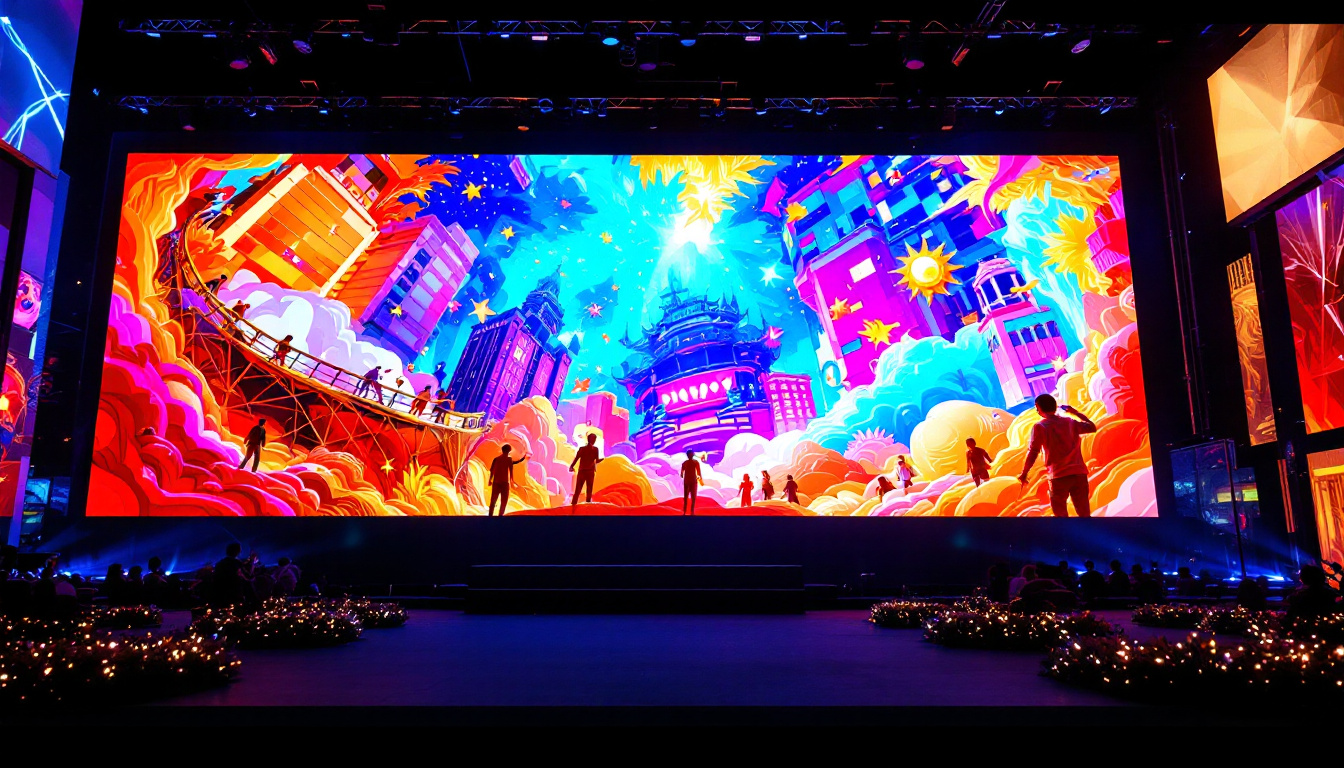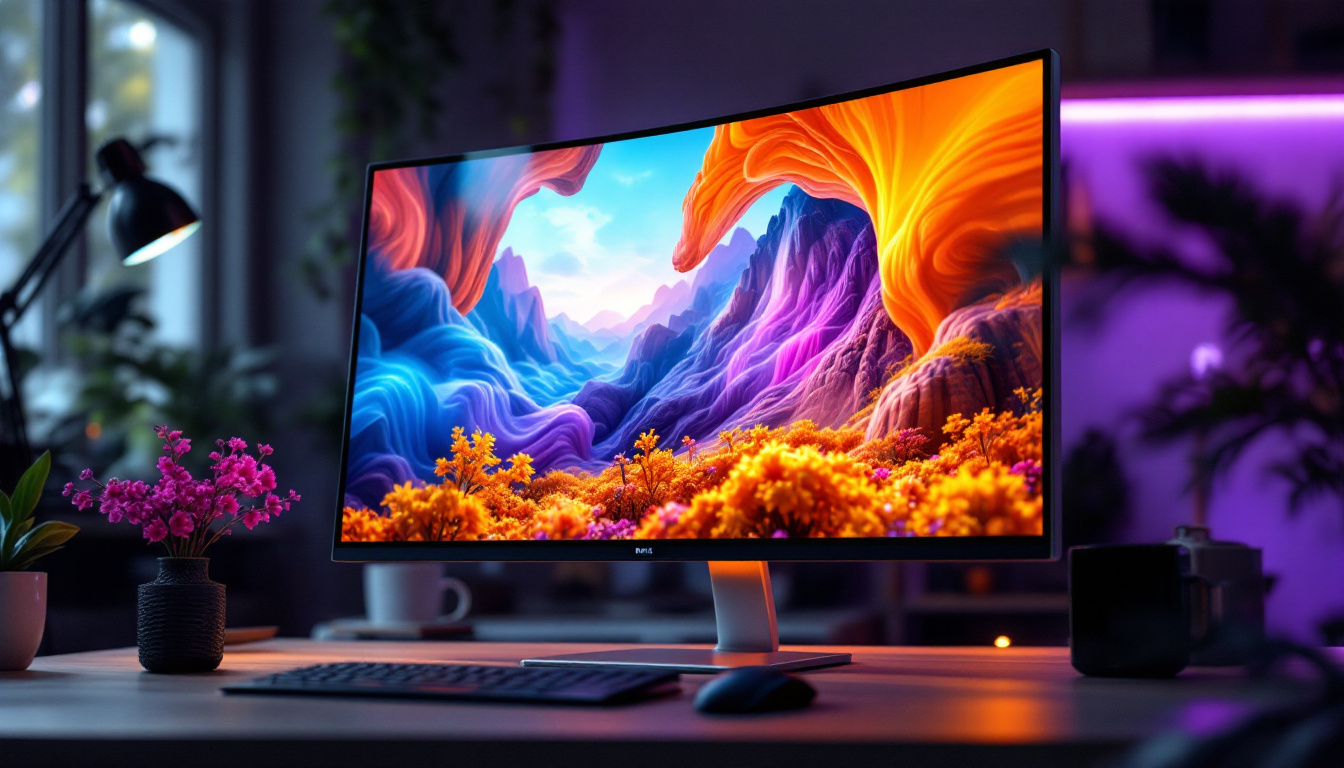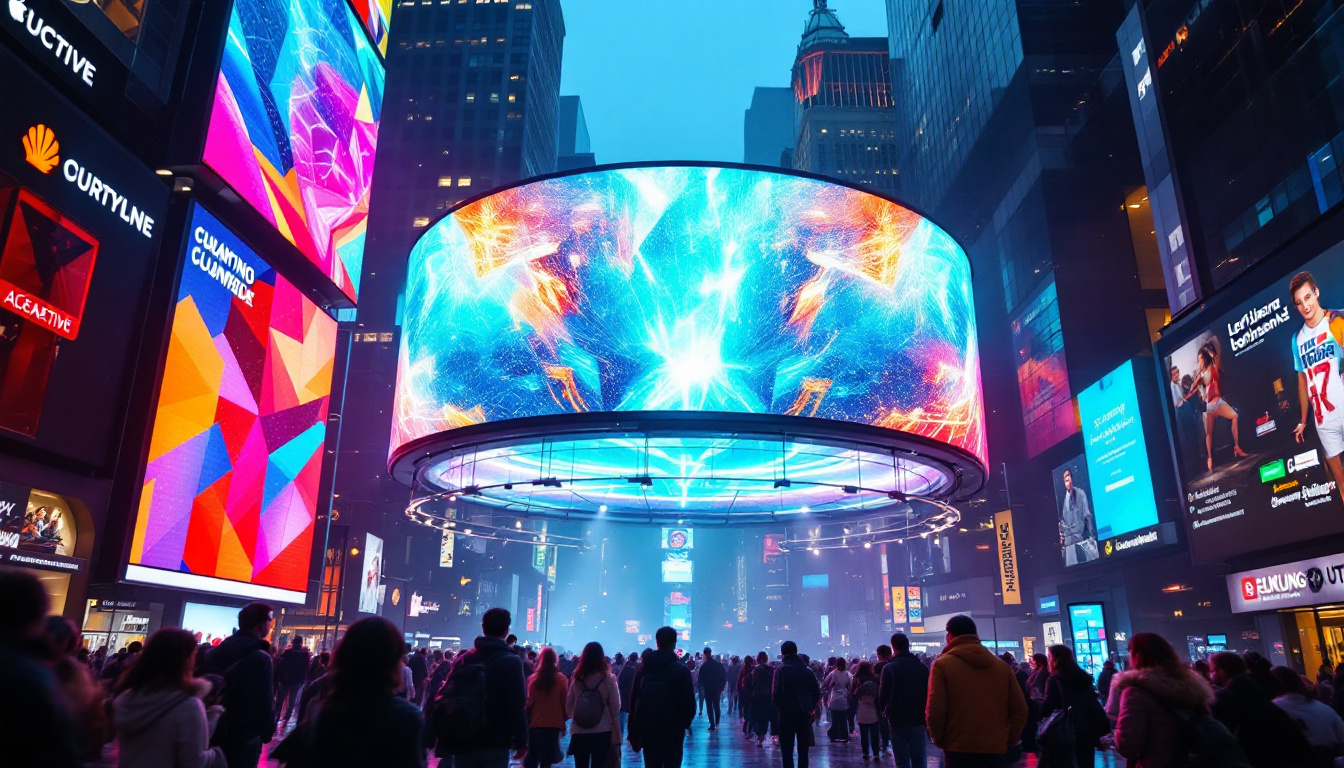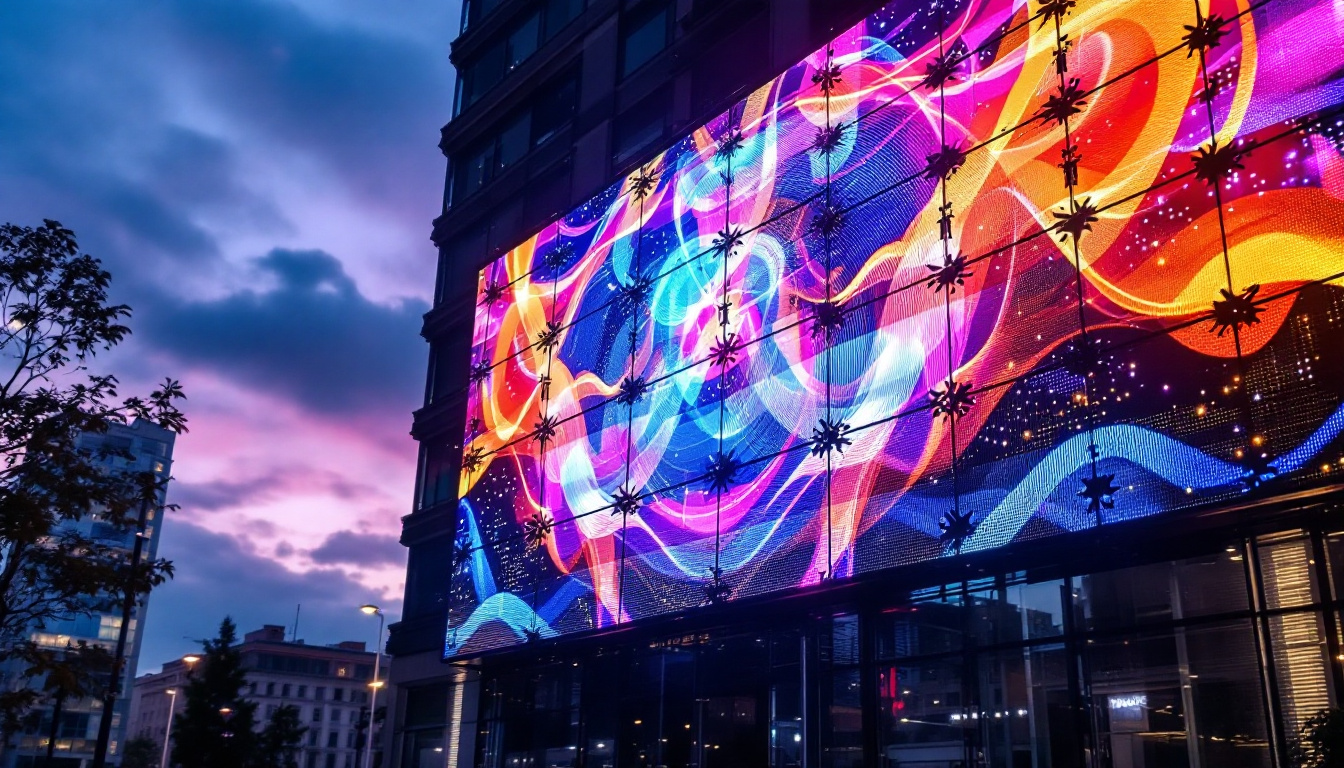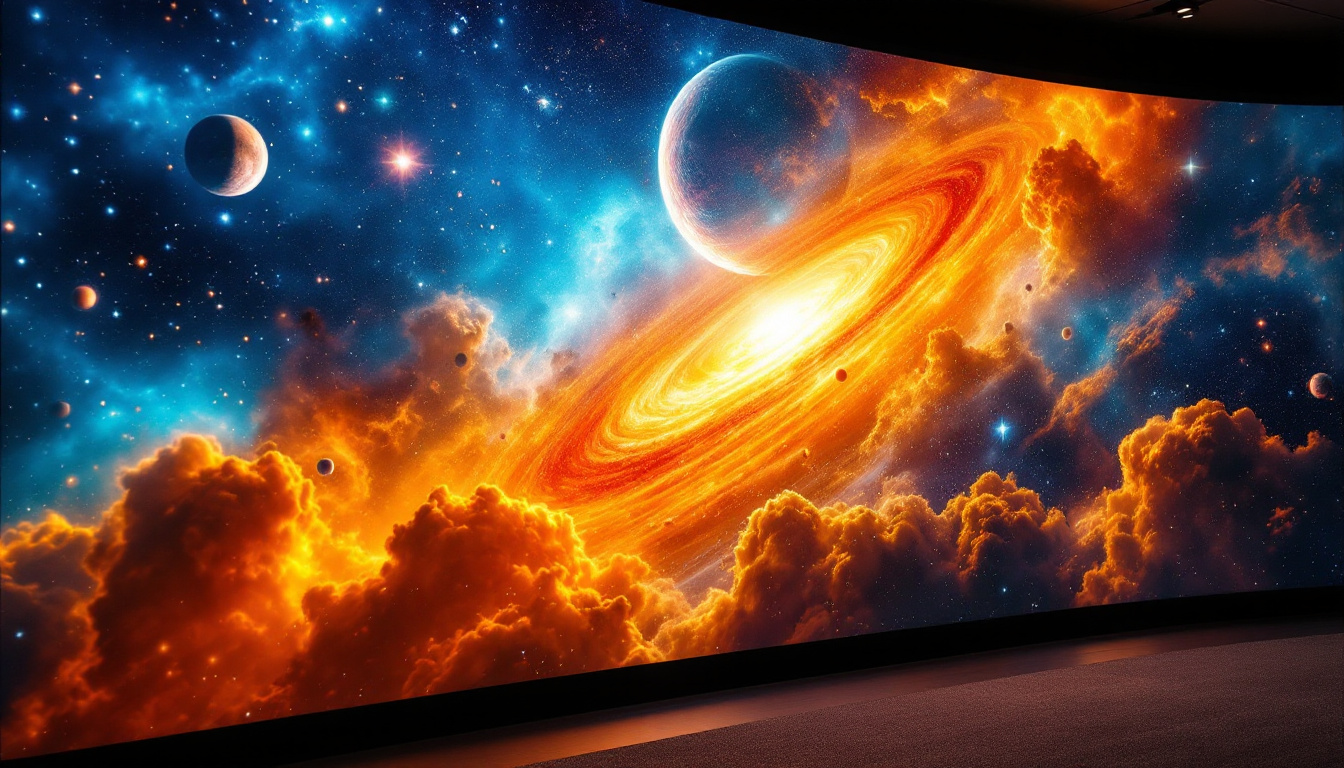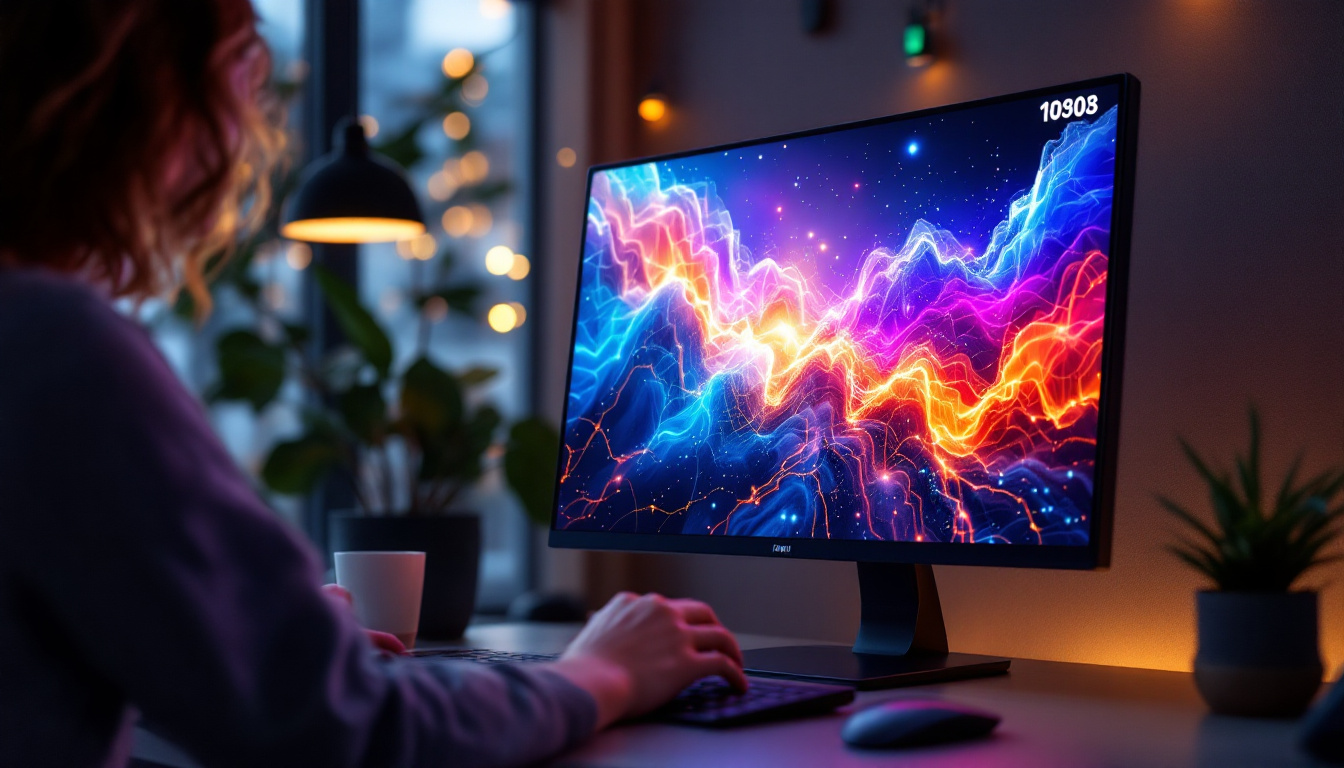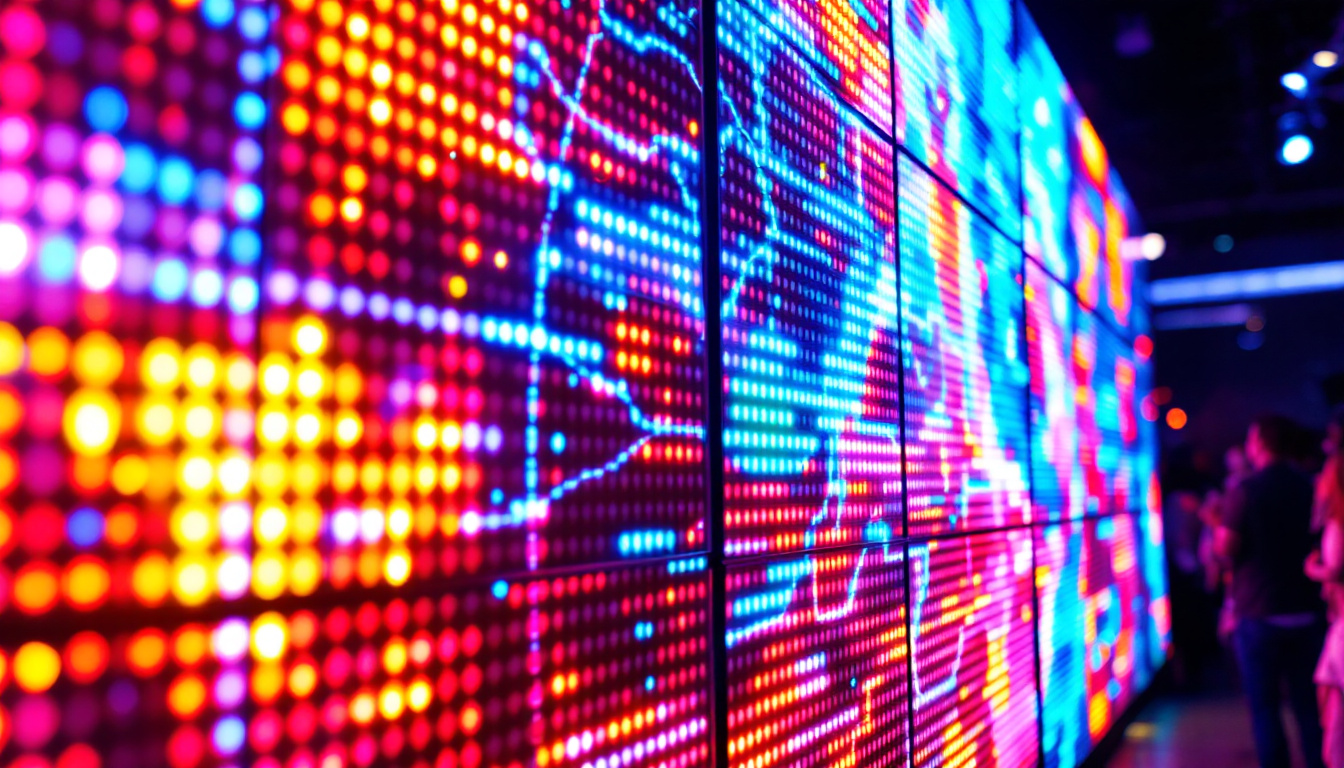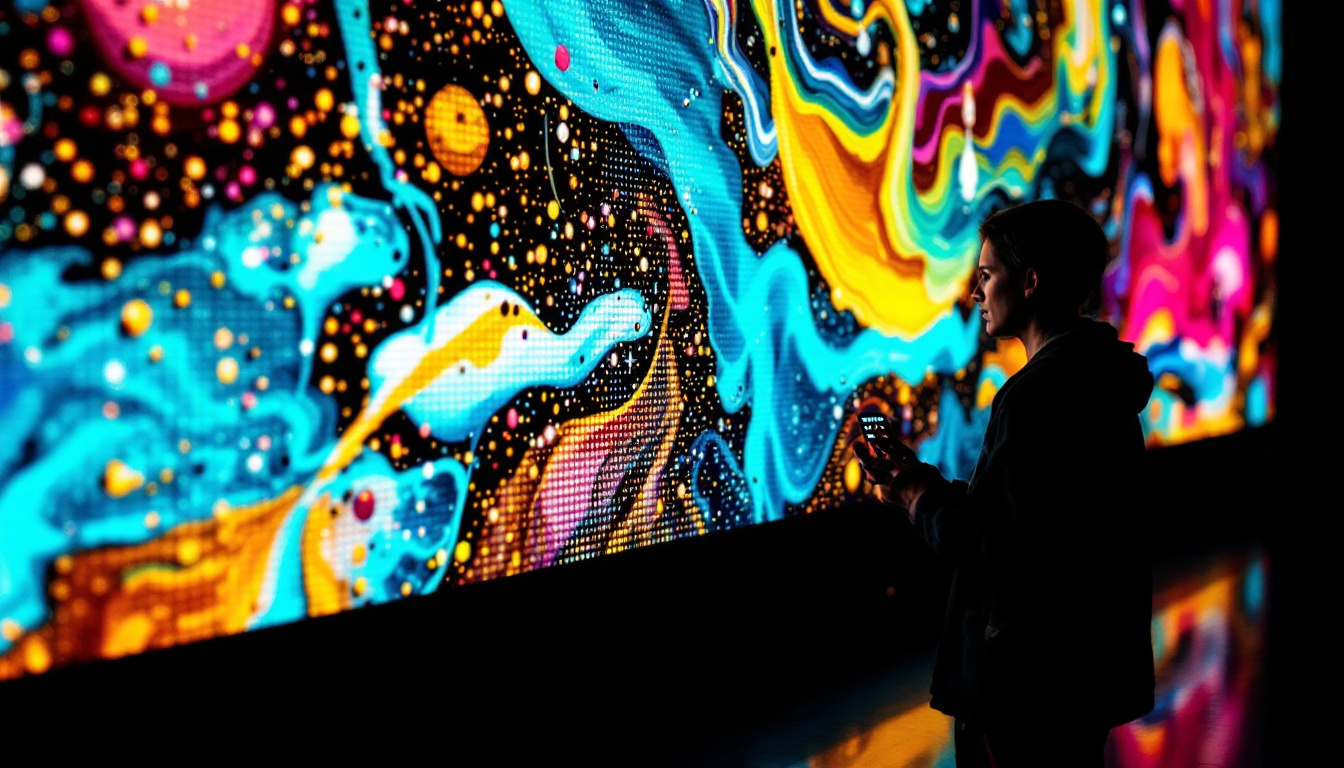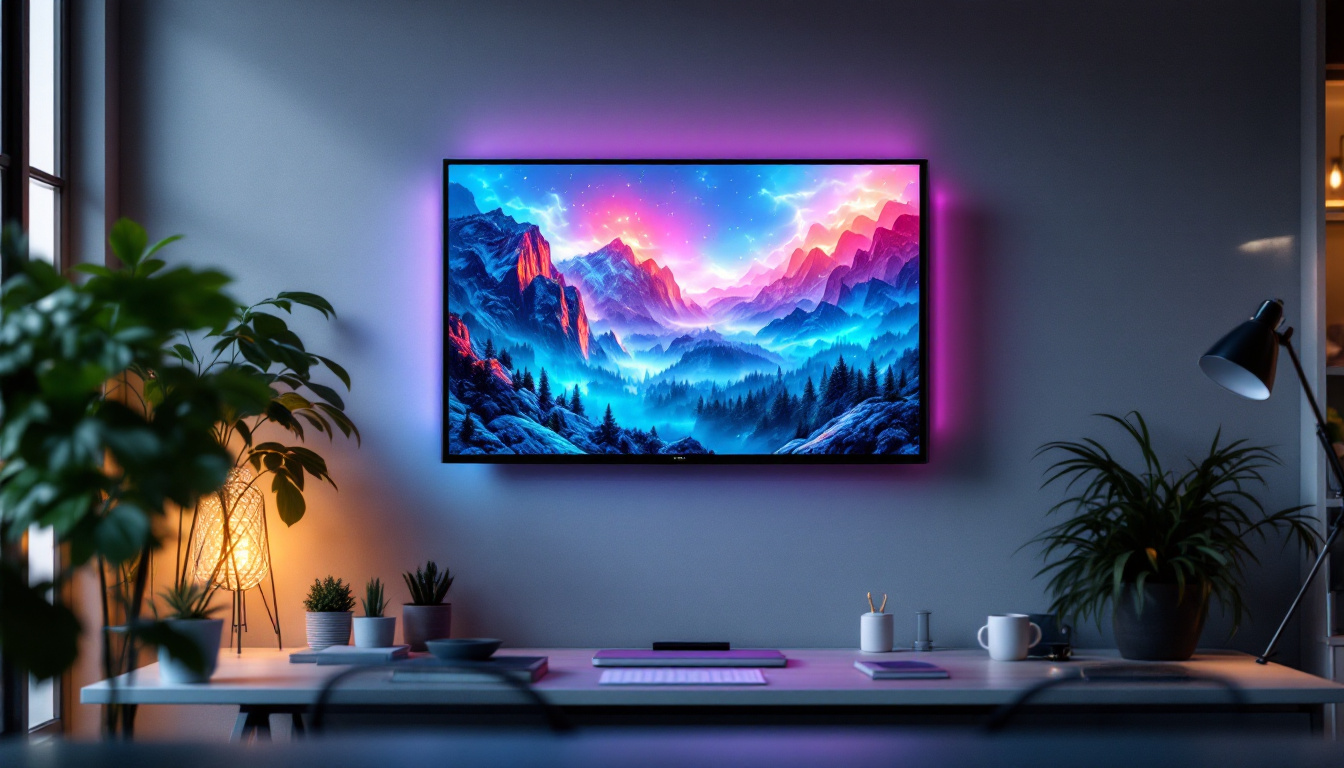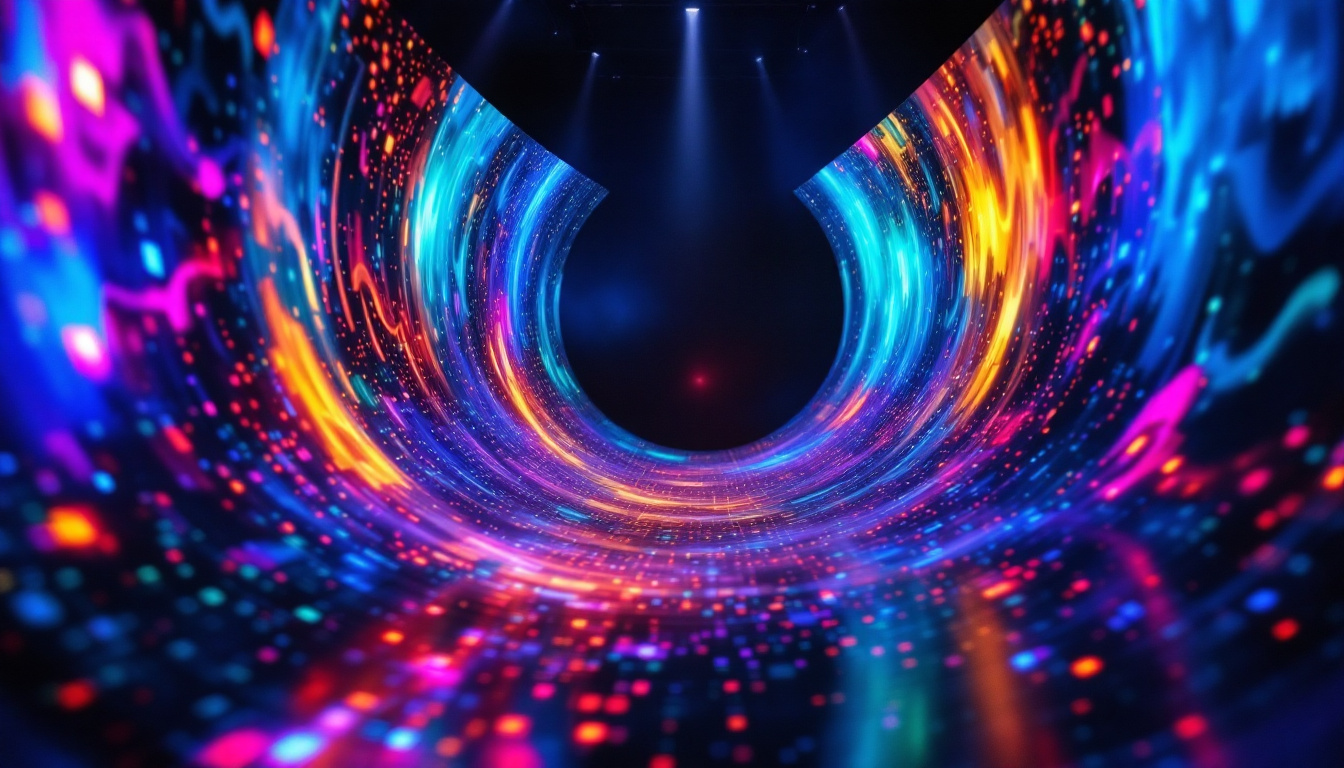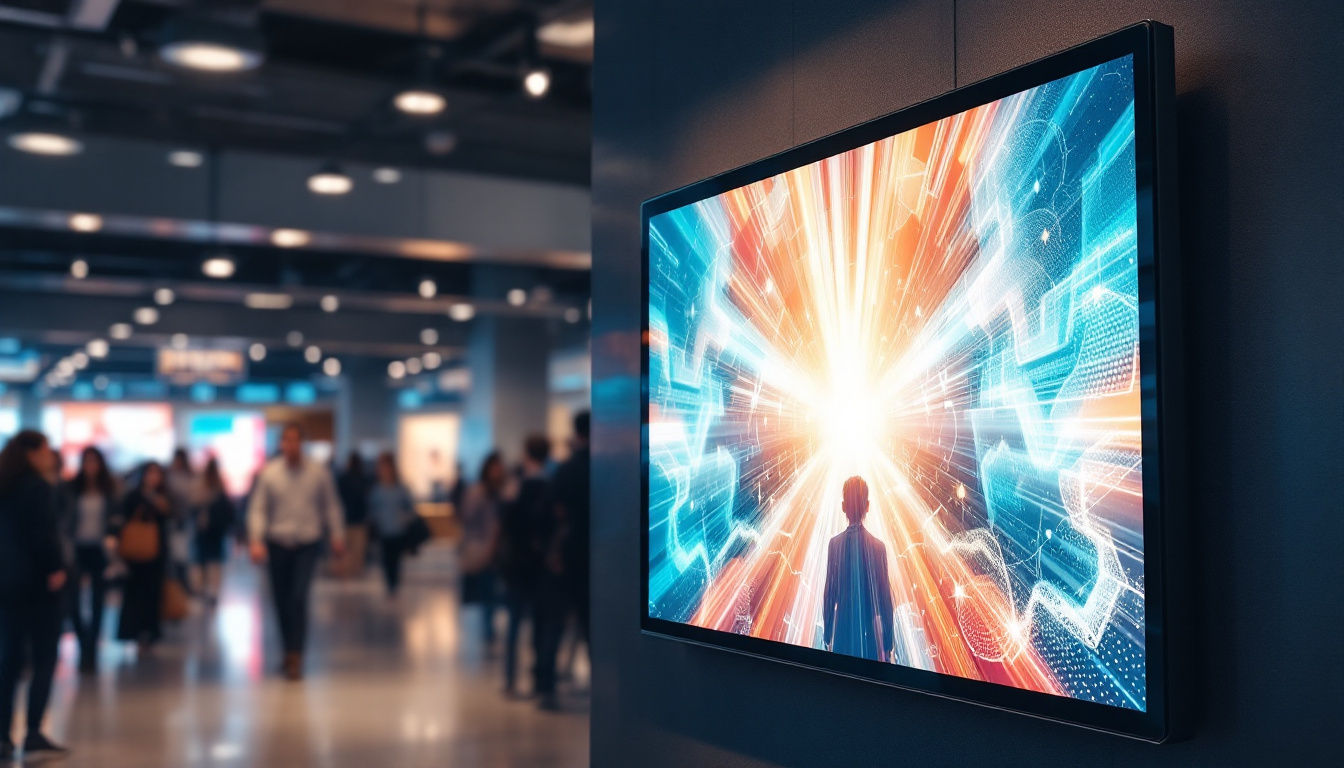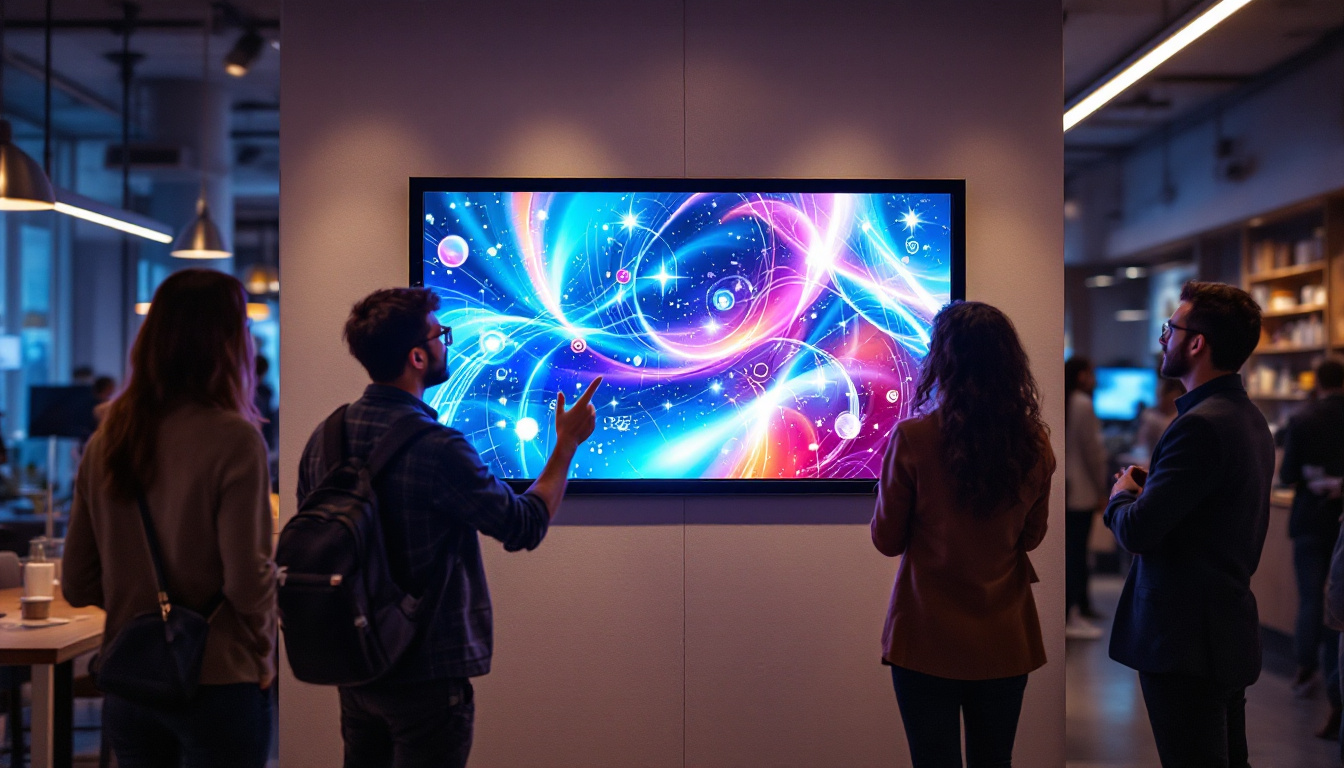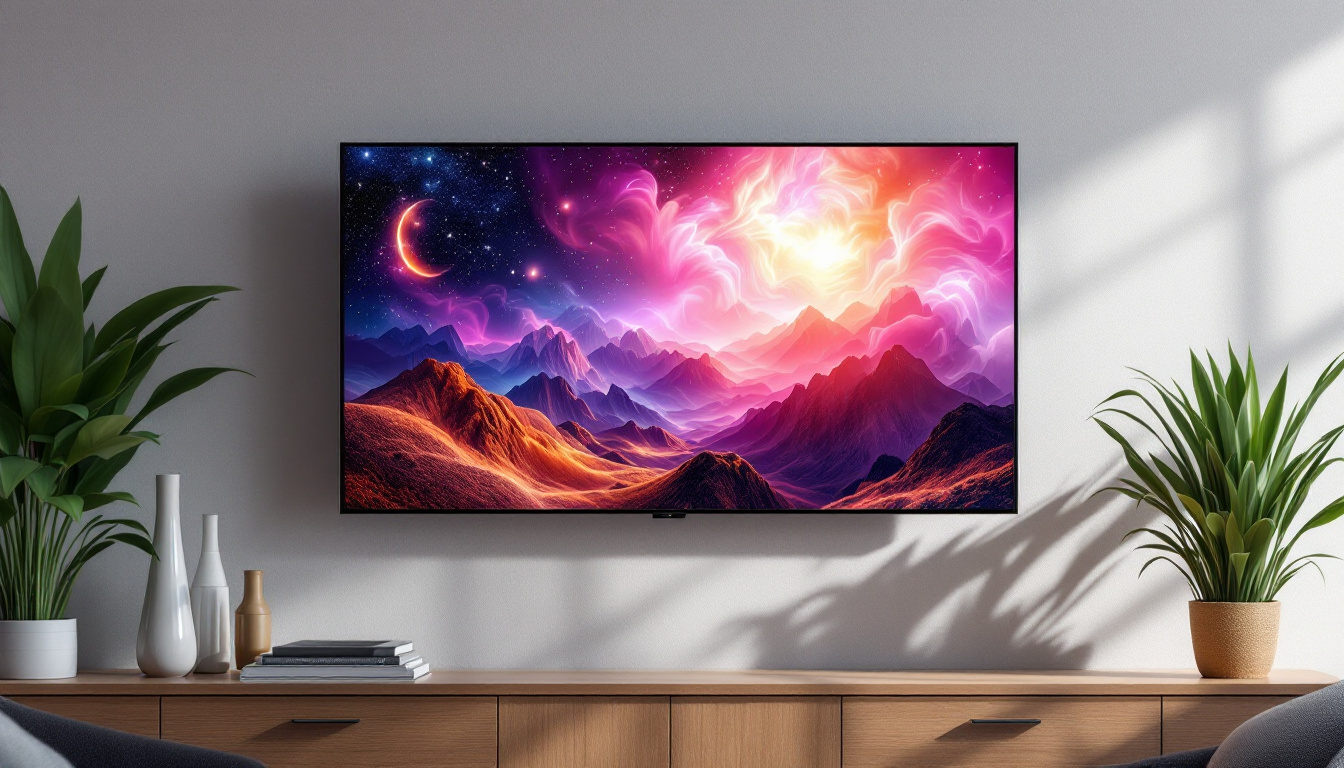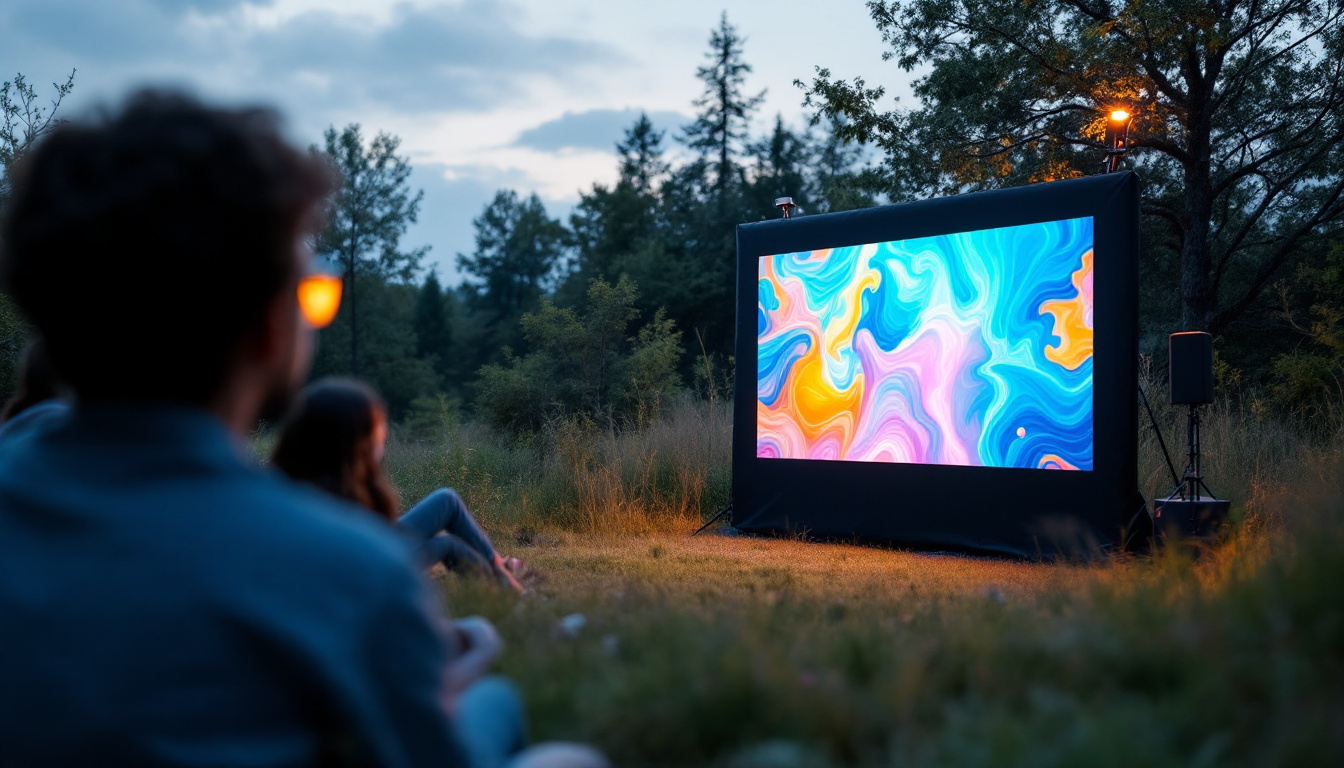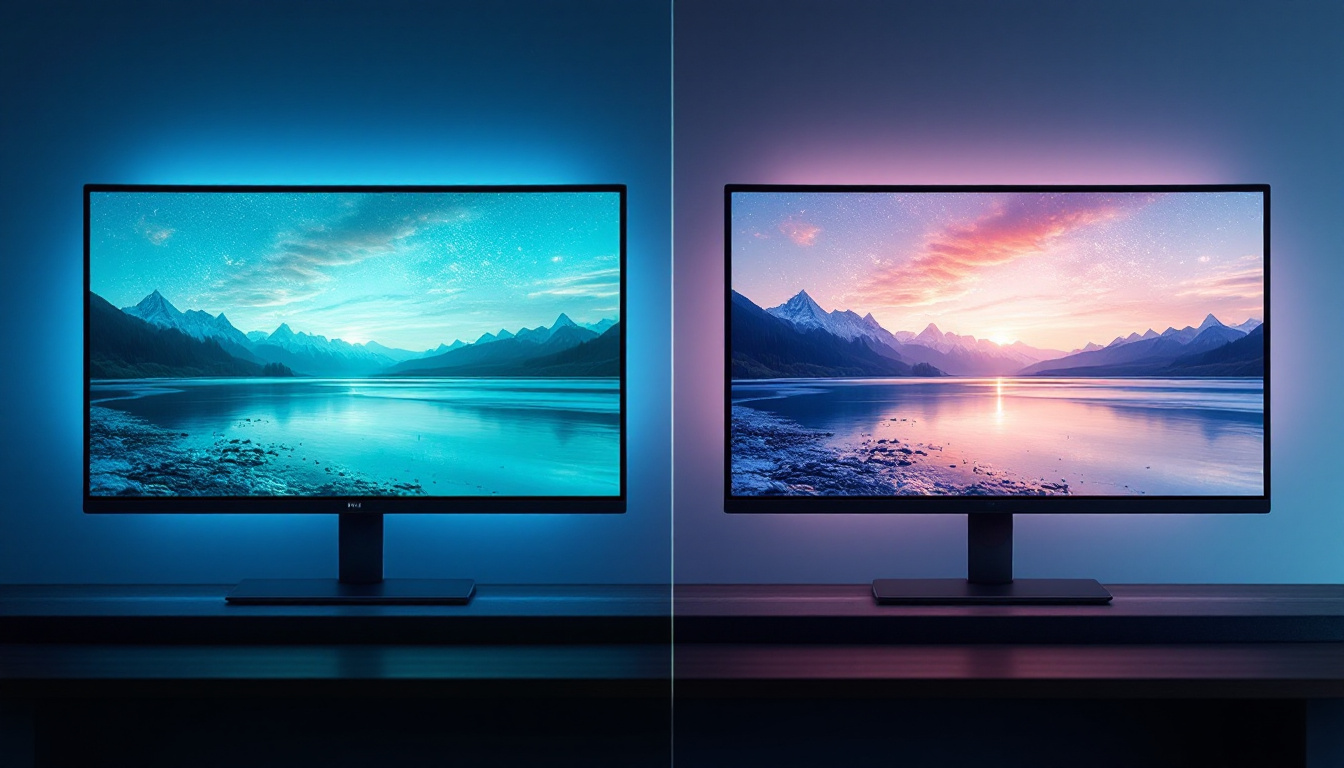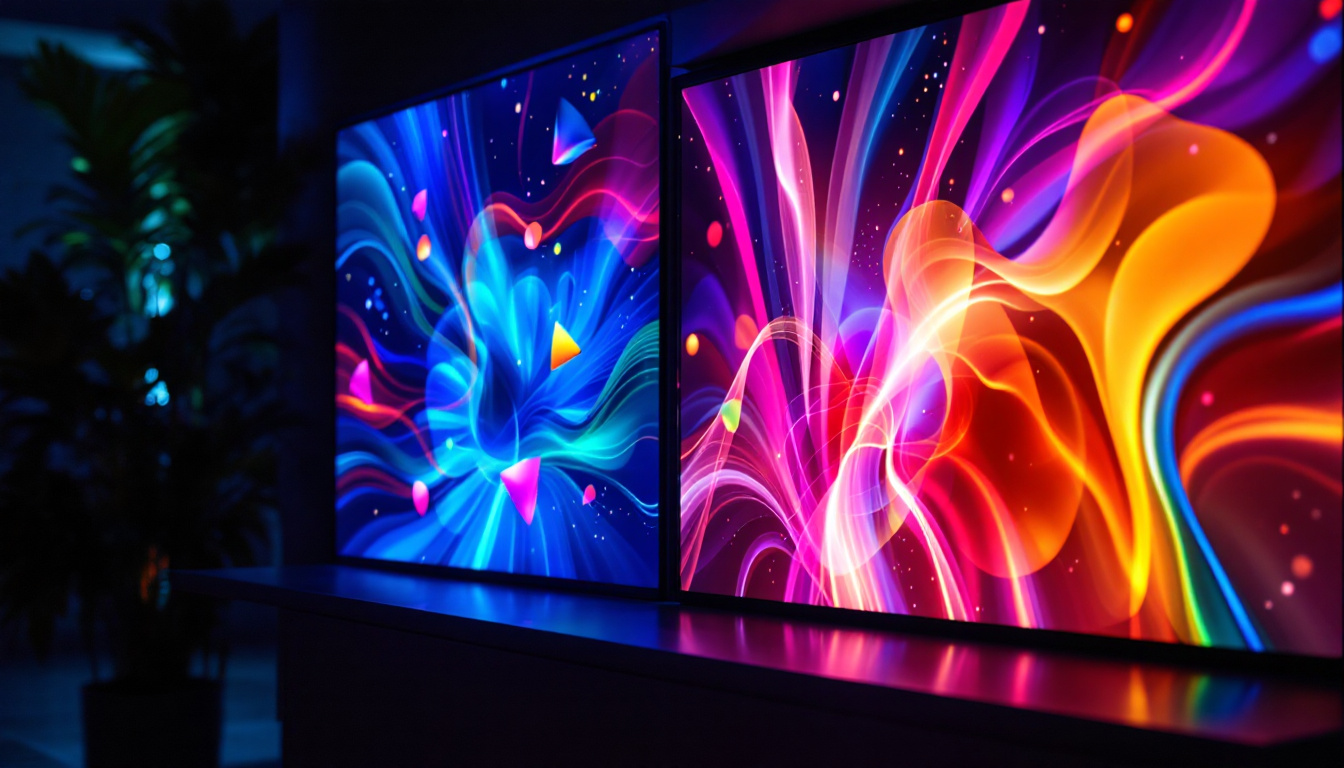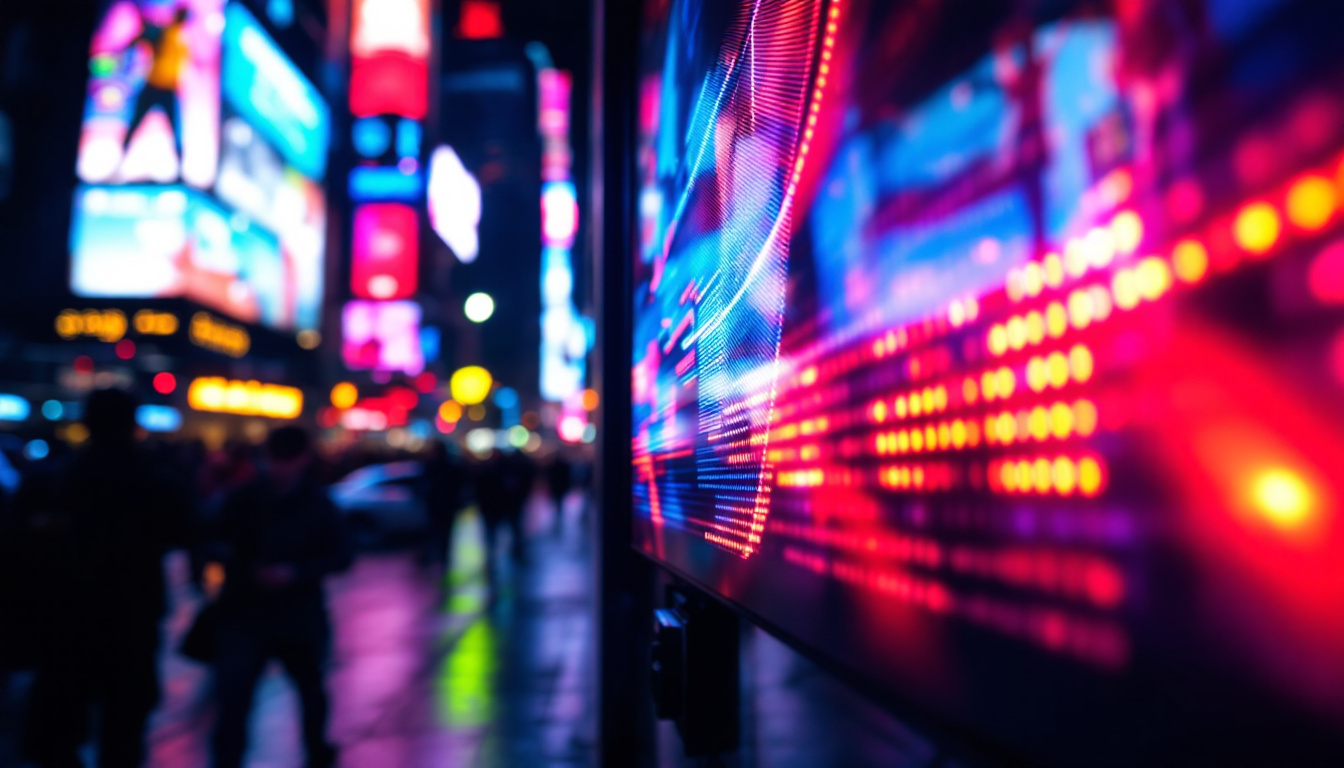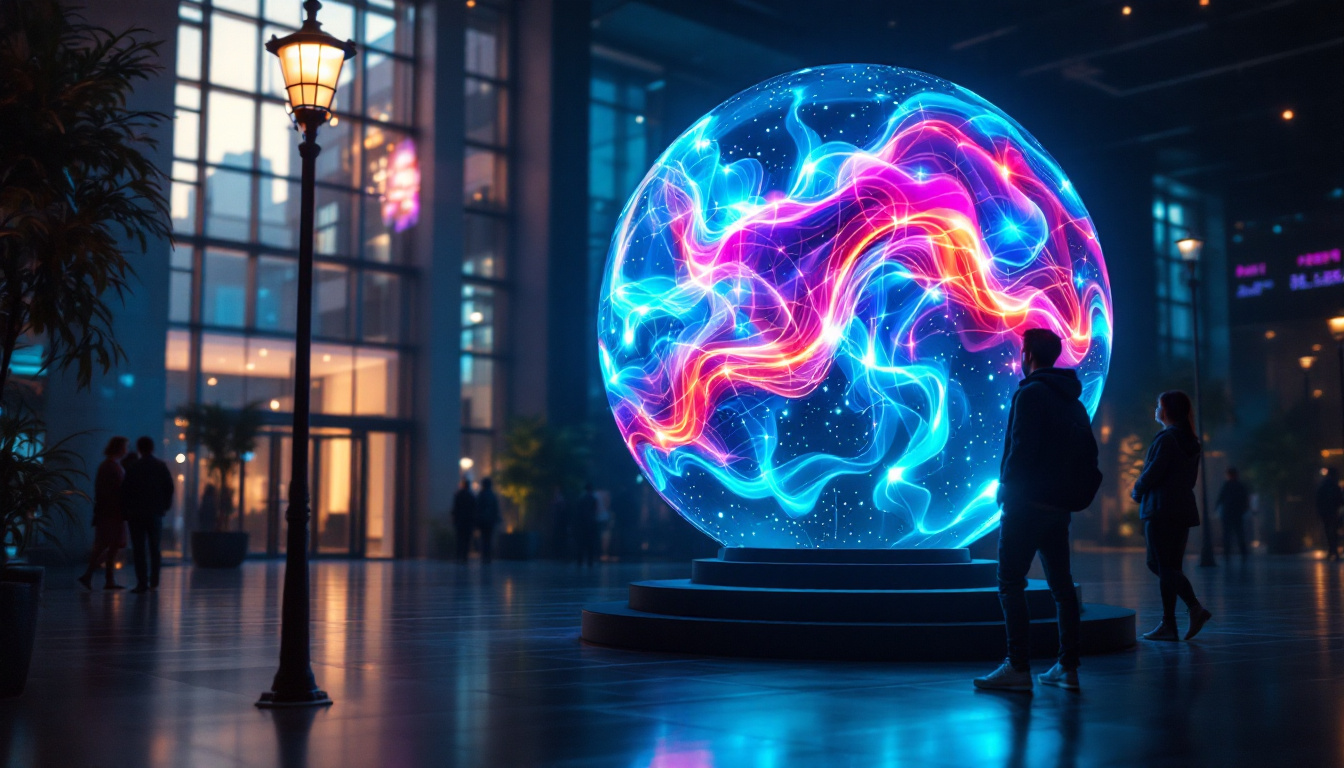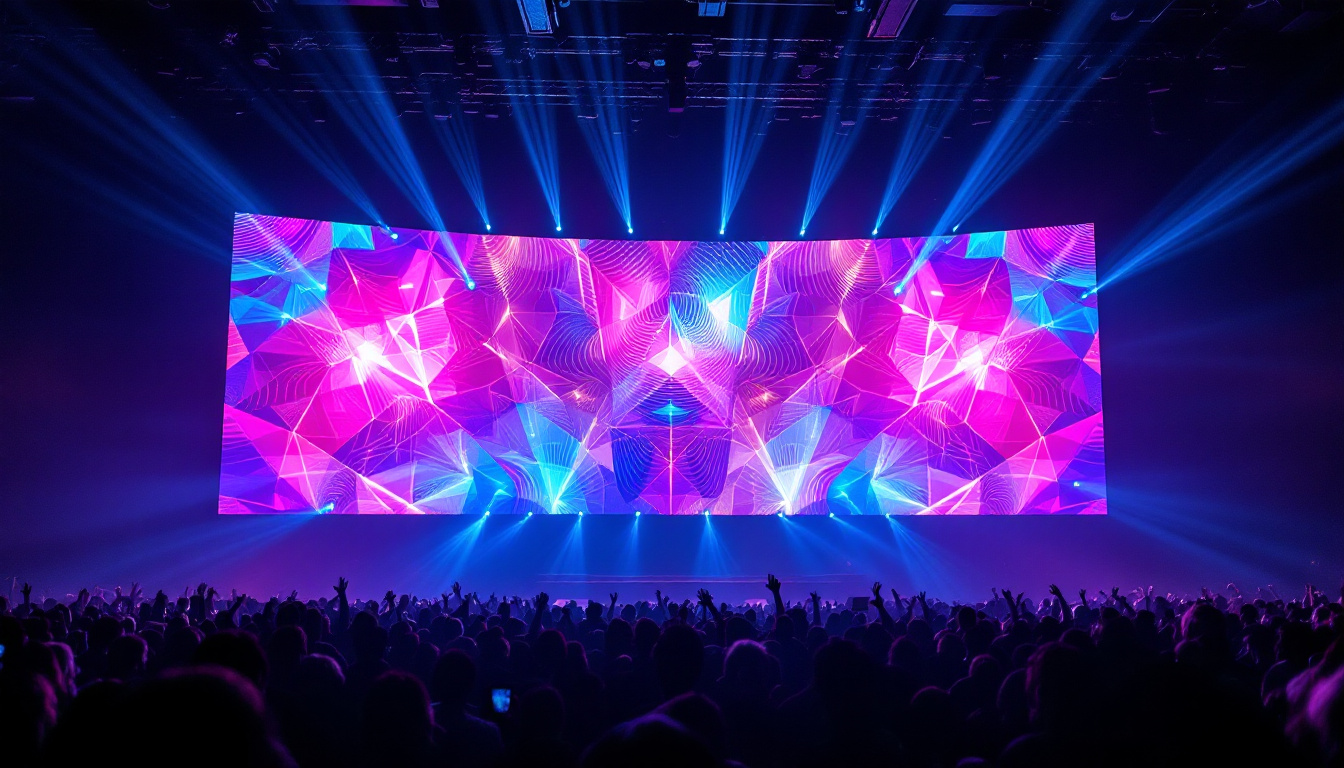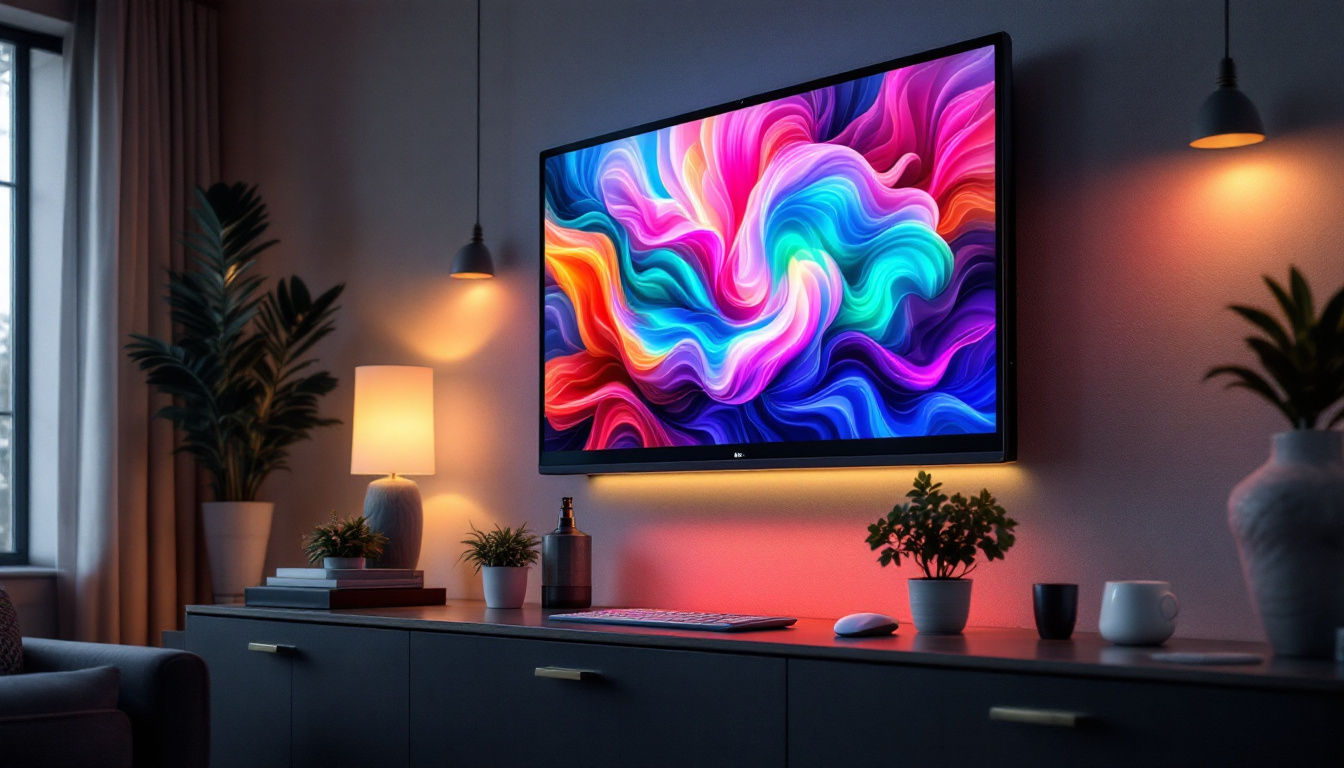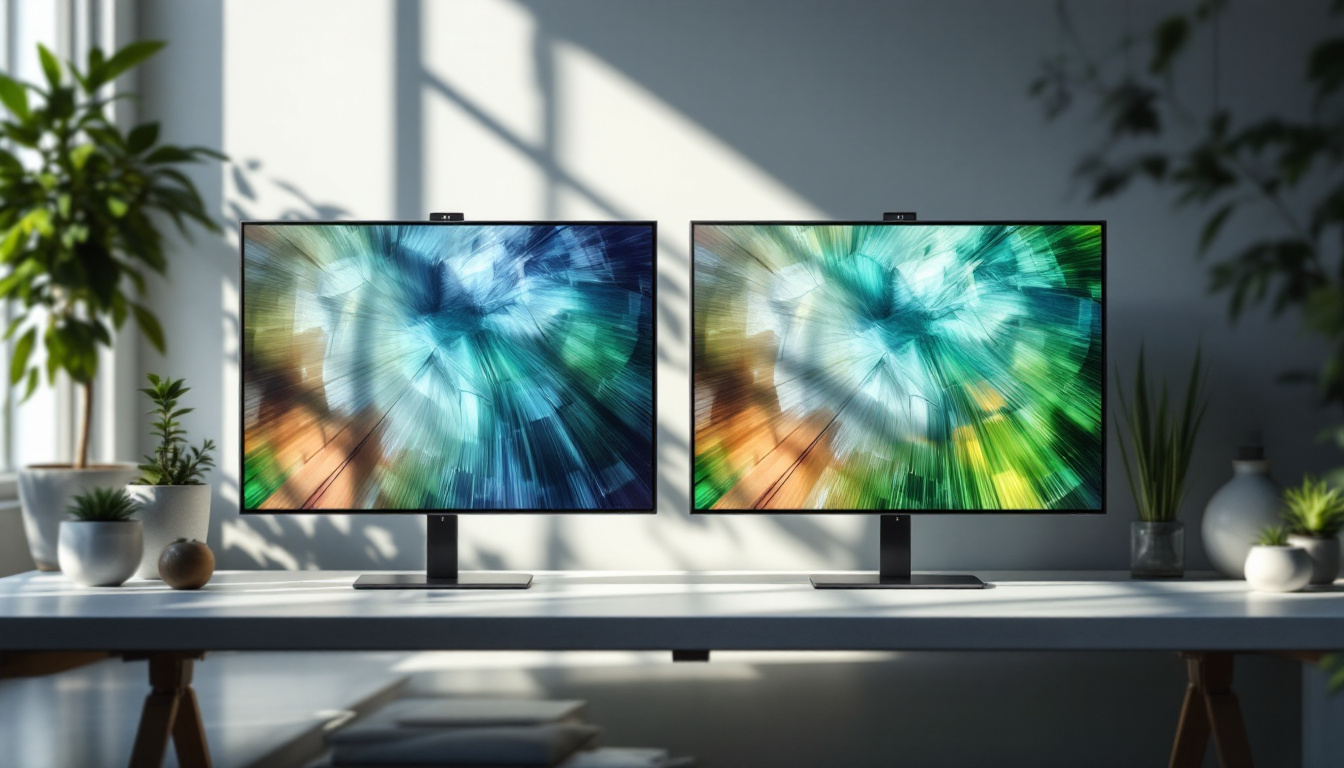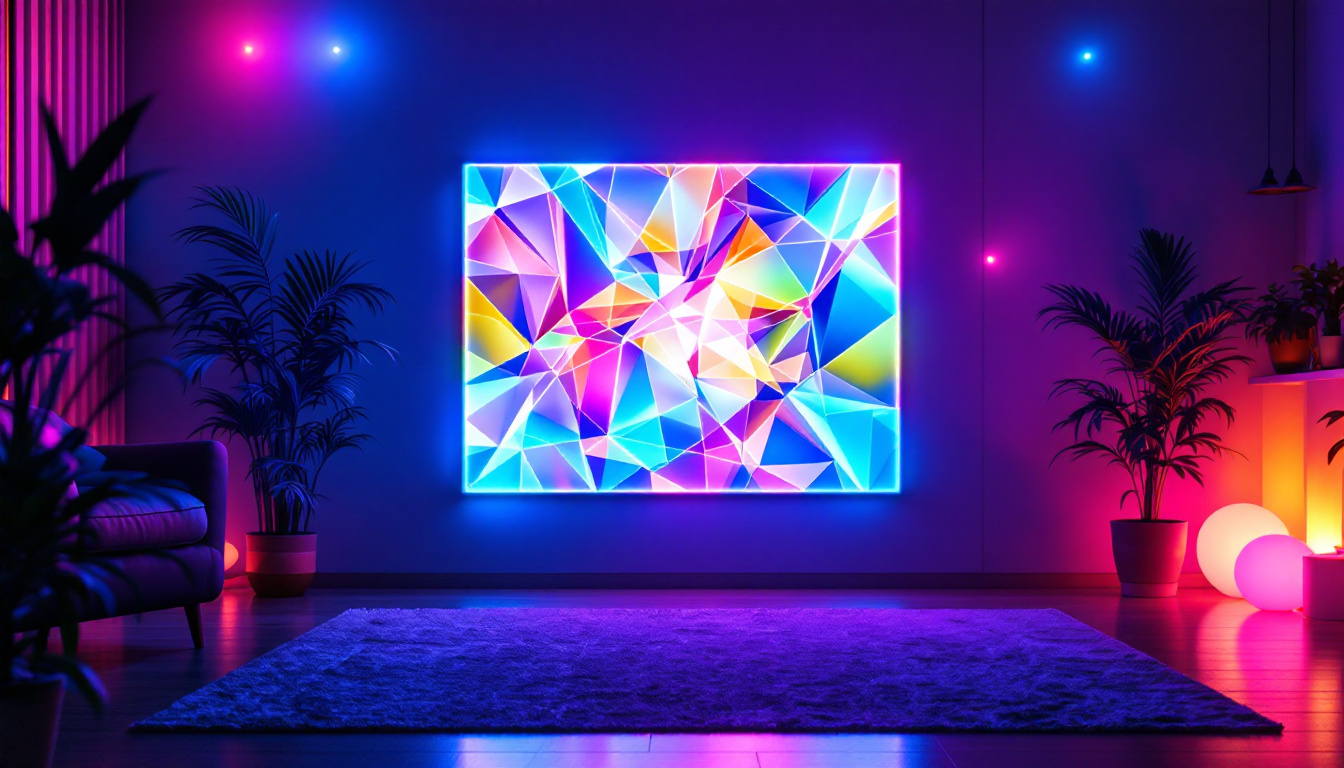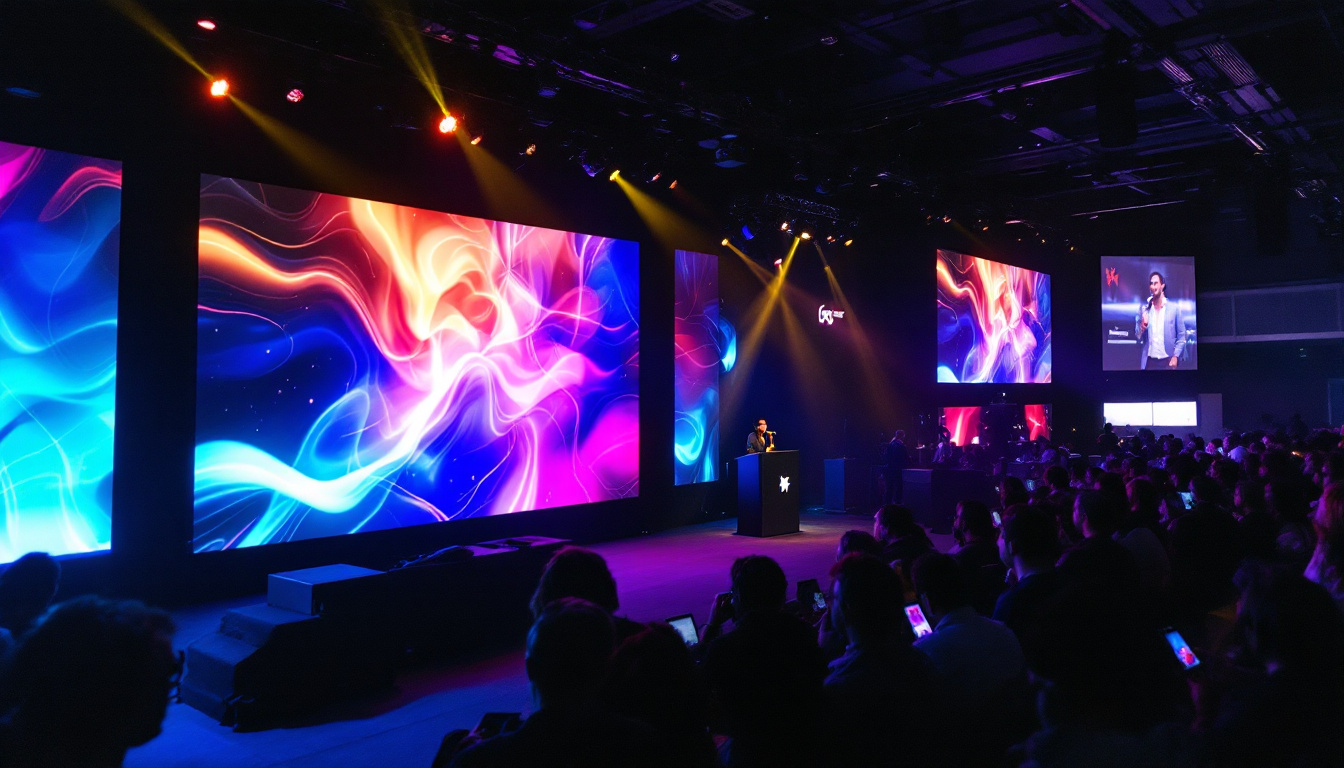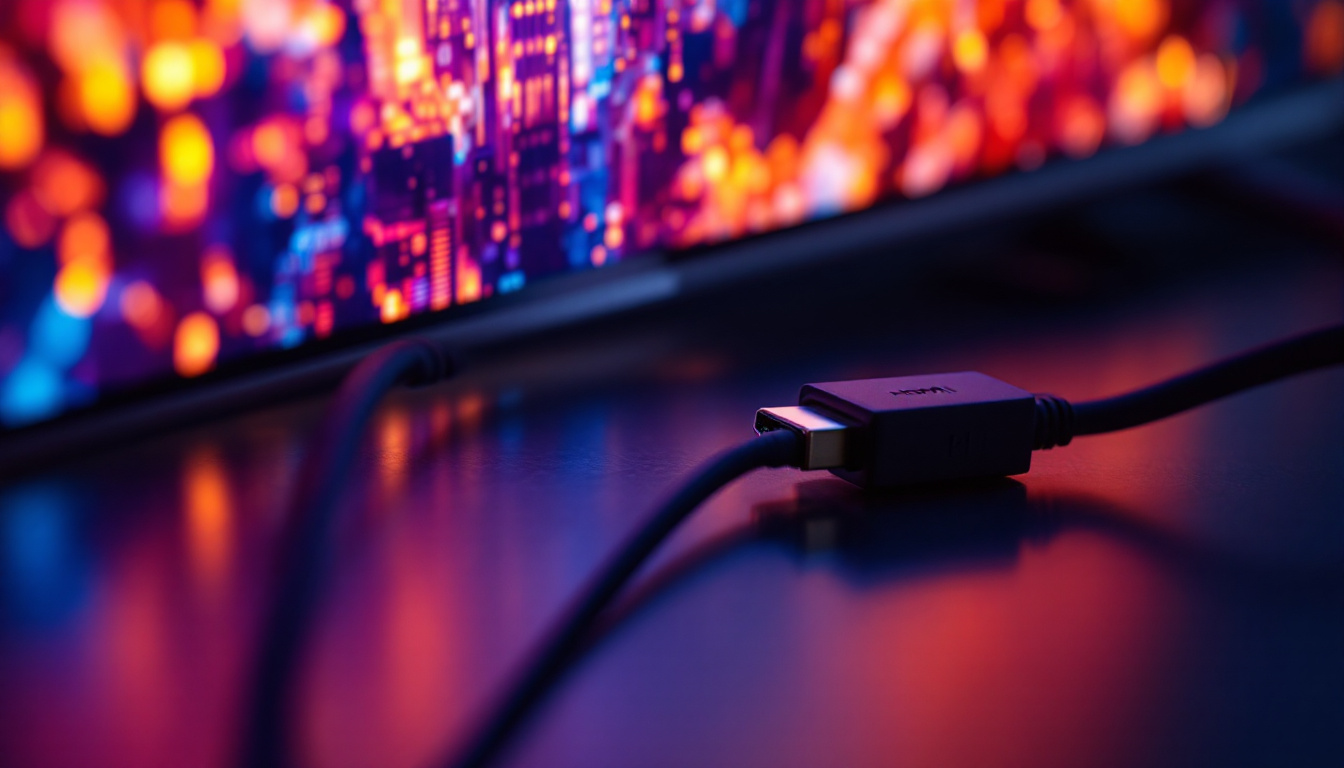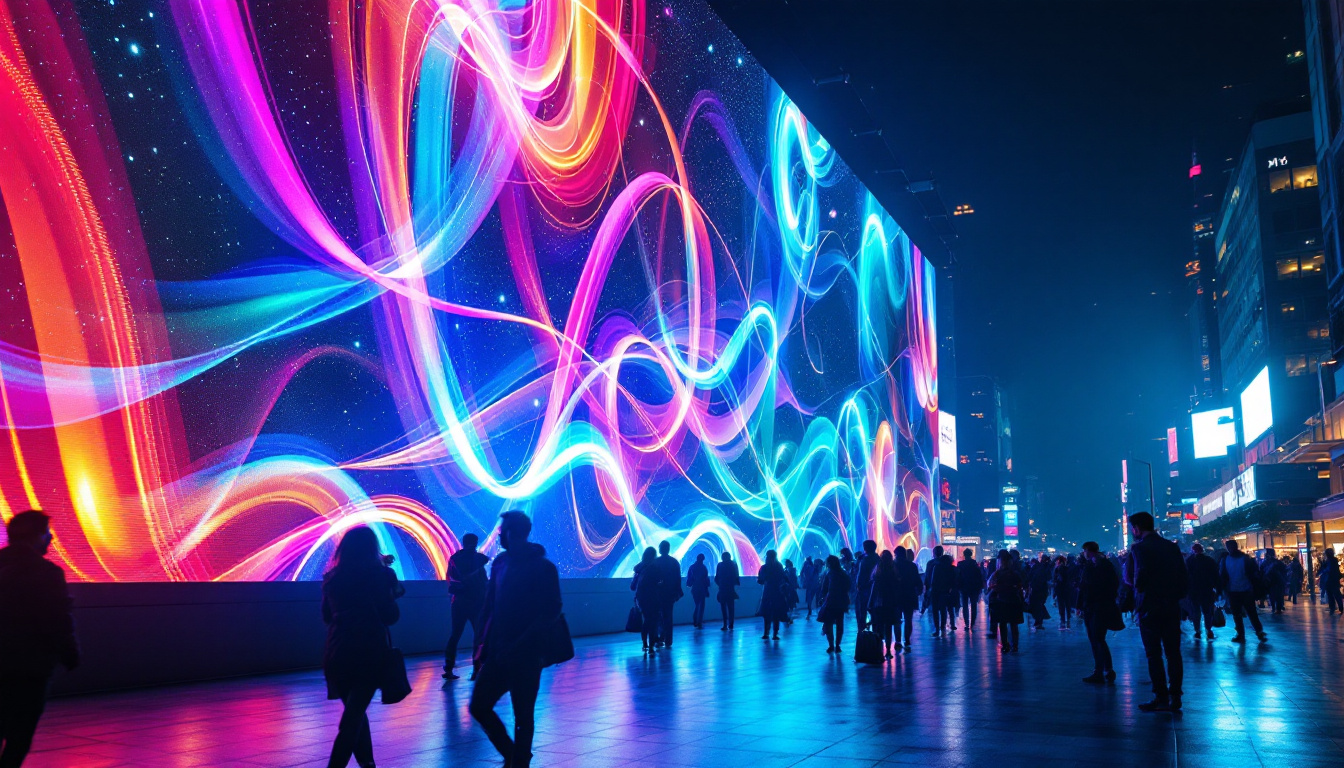In recent years, the demand for high-resolution displays has surged, with 8K technology leading the charge. As the evolution of video quality continues to advance, understanding the intricacies of LED displays becomes essential. This article delves into the world of 8K video, exploring the technology behind LED displays, their applications, and the future of visual media.
The Evolution of Display Technology
From the early days of cathode-ray tubes (CRTs) to the sleek, ultra-high-definition screens of today, display technology has undergone significant transformations. Each advancement has brought forth new possibilities for visual storytelling, entertainment, and information dissemination. The journey of display technology reflects not only the evolution of engineering and design but also the changing demands of consumers and industries alike. As we moved from bulky CRTs to flat-panel displays, the focus shifted towards not just resolution but also form factor, energy efficiency, and user experience.
Initially, displays were limited to standard definition (SD), which offered a resolution of 480p. As technology progressed, high definition (HD) emerged, followed by full HD (1080p). The introduction of 4K displays marked a significant leap, providing four times the pixel resolution of 1080p. Now, 8K displays are setting a new standard, boasting an impressive resolution of 7680 x 4320 pixels. This rapid evolution has been driven by advancements in panel technology, such as OLED and QLED, which have improved contrast ratios and color reproduction, making screens not only sharper but also more vibrant and engaging.
Understanding 8K Resolution
8K resolution is often described as the pinnacle of visual clarity. With over 33 million pixels, it offers an unparalleled level of detail that is particularly beneficial for large screens. This high pixel density allows for immersive experiences, making it ideal for applications ranging from cinematic productions to gaming and virtual reality. The ability to display intricate textures and subtle nuances in images can transport viewers into the content, creating a more engaging and captivating experience. As a result, filmmakers and game developers are increasingly adopting 8K technology to push the boundaries of visual storytelling.
However, the advantages of 8K extend beyond mere pixel count. The increased resolution enhances color accuracy and depth, providing a more lifelike image. This is crucial for professional environments, such as medical imaging and design, where precision is paramount. In fields like architecture and product design, the ability to visualize details in high resolution allows for better decision-making and more effective communication of ideas. Furthermore, as content creators begin to produce more 8K content, the demand for compatible displays will likely drive innovation in streaming technologies and hardware capabilities, ensuring that audiences can fully appreciate the stunning visuals that 8K has to offer.
LED Display Technology
Light Emitting Diode (LED) technology has revolutionized the way displays are constructed and perceived. Unlike traditional LCD screens that rely on backlighting, LED displays utilize individual diodes to emit light, resulting in brighter images and deeper blacks. This advancement has not only improved the visual quality of screens but has also paved the way for thinner and more flexible display designs, allowing for innovative applications in various fields, from consumer electronics to advertising.
LED displays come in various forms, including OLED (Organic LED) and MicroLED, each with unique characteristics. OLED displays are known for their exceptional color reproduction and contrast ratios, while MicroLED technology offers modularity and scalability, making it suitable for various applications, including large-scale installations. The flexibility of these technologies enables manufacturers to create curved and even transparent displays, pushing the boundaries of traditional screen design and enhancing user interaction.
The Benefits of LED Displays
One of the most significant advantages of LED displays is their energy efficiency. Compared to traditional display technologies, LEDs consume less power, making them an environmentally friendly option. Furthermore, their longevity reduces the need for frequent replacements, contributing to lower overall costs. This efficiency not only benefits consumers but also plays a crucial role in reducing the carbon footprint of electronic devices, aligning with global sustainability goals.
Additionally, LED displays provide superior viewing angles and response times, enhancing the viewer’s experience. This is particularly important in environments such as sports arenas and concert venues, where audiences are spread across a wide area. The ability to maintain color accuracy and brightness from various angles ensures that everyone in attendance can enjoy a consistent and immersive experience. Moreover, advancements in LED technology have led to the development of high-refresh-rate displays, which are especially beneficial for fast-paced content, such as gaming and live sports broadcasts, where every millisecond counts.
Applications of 8K LED Displays
The versatility of 8K LED displays has led to their adoption across various sectors. From entertainment to education, the applications are vast and continually expanding.
Entertainment and Media
In the entertainment industry, 8K displays are becoming increasingly prevalent in cinemas and home theaters. Filmmakers are beginning to shoot in 8K to capture every detail, allowing audiences to experience films as intended. Streaming services are also starting to offer 8K content, catering to consumers who seek the highest quality viewing experience.
Moreover, gaming has embraced 8K technology, with next-gen consoles and high-end PCs capable of delivering stunning graphics. Gamers can enjoy immersive environments that enhance gameplay and provide a competitive edge. The integration of 8K displays into virtual reality (VR) systems is particularly noteworthy, as it allows users to experience virtual worlds with unprecedented clarity, making the experience more lifelike and engaging.
Education and Training
In educational settings, 8K LED displays are transforming the way information is presented. High-resolution visuals can facilitate better understanding and retention of complex subjects. For example, medical students can benefit from detailed anatomical models, while engineering students can visualize intricate designs with precision.
Training programs, especially in fields such as aviation and military, utilize 8K displays to create realistic simulations. These immersive experiences enhance learning outcomes and prepare individuals for real-world scenarios. Additionally, language learning applications are leveraging 8K technology to provide visual context for vocabulary and grammar, making lessons more engaging. By incorporating high-definition visuals, educators can capture students’ attention and foster a more interactive learning environment, ultimately leading to improved academic performance.
The Future of 8K LED Displays
As technology continues to advance, the future of 8K LED displays looks promising. With ongoing research and development, manufacturers are exploring ways to enhance performance, reduce costs, and expand applications. The integration of artificial intelligence in display technology is one exciting avenue being pursued. AI algorithms can upscale lower resolution content to near 8K quality, allowing consumers to enjoy a wider range of media on their high-resolution screens. This not only enhances the viewing experience but also encourages the adoption of 8K displays by making existing content more visually appealing.
One area of focus is improving content availability. While 8K displays are becoming more common, the content to support them is still limited. As more filmmakers and content creators adopt 8K technology, the library of available content will grow, making it more accessible to consumers. Streaming platforms are also beginning to invest in 8K content, with several major services already offering select titles in this format. This shift is likely to accelerate as consumer demand increases, pushing creators to produce more high-resolution content that takes full advantage of the capabilities of 8K displays.
Challenges Ahead
Despite the advantages, several challenges remain. The cost of 8K displays can be prohibitive for many consumers, limiting widespread adoption. Additionally, the need for high-bandwidth internet connections poses a barrier for streaming 8K content. Many households still rely on standard broadband connections, which may struggle to deliver the necessary speeds for seamless 8K streaming. As internet infrastructure improves, however, this challenge may gradually diminish, allowing more users to experience the benefits of high-resolution content.
Moreover, the question of whether the human eye can perceive the difference between 4K and 8K resolutions at typical viewing distances is still debated. Some experts argue that the improvements in detail and clarity are only noticeable at larger screen sizes or closer viewing distances, which could limit the practical benefits of 8K for average consumers. As technology evolves, these challenges will need to be addressed to fully realize the potential of 8K displays. Additionally, the industry must consider the environmental impact of producing and disposing of high-tech displays, ensuring that sustainability becomes a key component of future developments in display technology.
Conclusion
8K LED displays represent the forefront of visual technology, offering exceptional clarity and detail that enhance various applications. As the industry continues to innovate, the potential for 8K technology is vast. From entertainment to education, the impact of high-resolution displays will shape the way information is consumed and experienced.
Understanding the intricacies of LED displays and their capabilities is essential for anyone looking to stay ahead in this rapidly evolving landscape. As content creators and consumers alike embrace the possibilities of 8K, the future of visual media promises to be more engaging and immersive than ever before.
Discover the Future of Visual Technology with LumenMatrix
Ready to experience the cutting-edge clarity and immersive detail of 8K LED displays? LumenMatrix is at the forefront of LED display innovation, offering a wide array of solutions that cater to every need. Whether you’re looking to enhance your brand’s visibility with an Indoor LED Wall Display, captivate passersby with an Outdoor LED Wall Display, or create dynamic visual experiences with our Custom and All-in-One LED Display options, LumenMatrix has the technology to bring your vision to life. Elevate your visual communication and engage your audience like never before. Check out LumenMatrix LED Display Solutions today and step into the future of visual storytelling.

